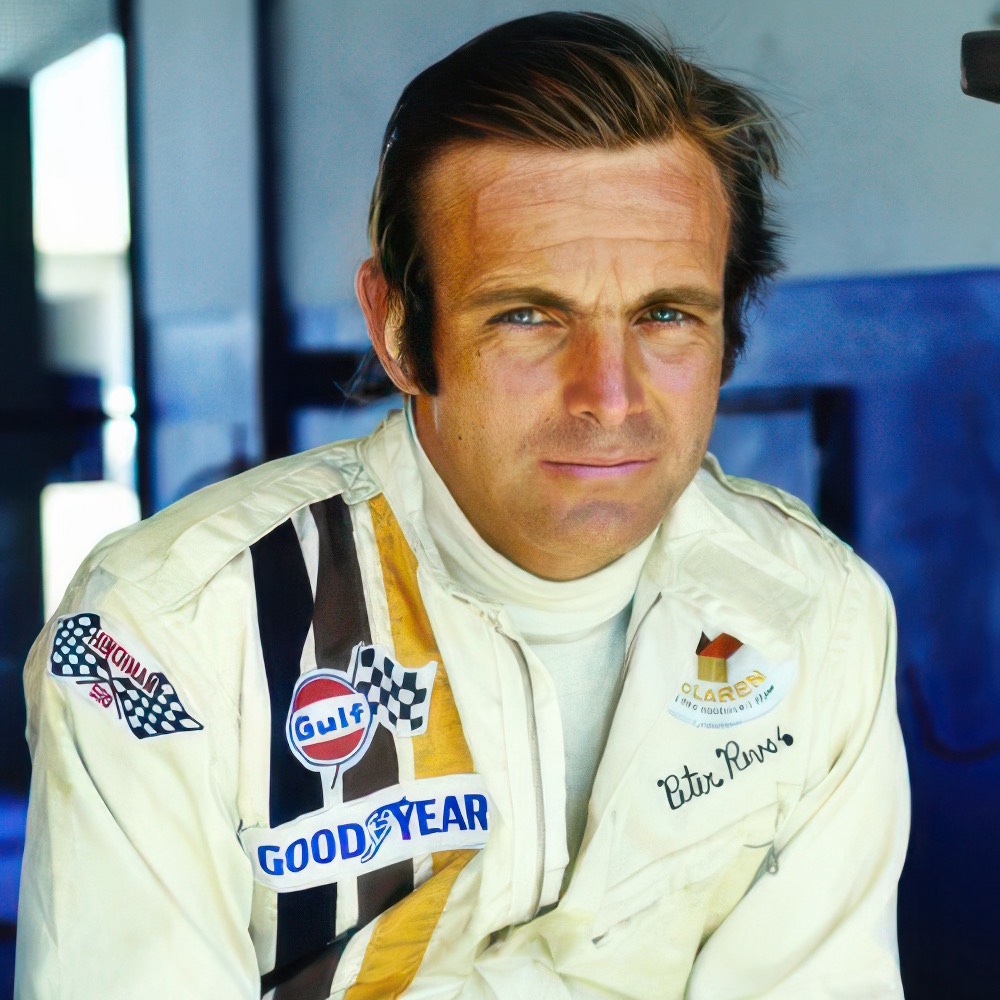
Peter Revson
Career Statistics
Biography
Peter Jeffrey Revson (27 February 1939 - 22 March 1974) was an American racing driver who competed in Formula One from 1964 to 1974, remembered as a talented, handsome playboy who rejected the easy life as heir to the Revlon cosmetics fortune to pursue his passion for motor racing, ultimately paying the ultimate price for his dreams. Born into privilege in New York City as the nephew of Revlon founder Charles Revson, Peter was educated at Cornell University but eschewed the corporate world to compete in motorsport, a decision that initially caused family tension but eventually earned their reluctant respect. Revson's early career included success in Formula Junior and Can-Am sports car racing, where he won three championships driving for Chaparral and McLaren, establishing himself as one of America's fastest drivers.
His Formula One career began with a single race for Reg Parnell Racing at the 1964 United States Grand Prix, but financial and sponsorship challenges meant consistent F1 opportunities remained elusive. After several sporadic appearances with various teams, Revson secured his breakthrough when he joined McLaren for the 1972 season alongside teammate Denny Hulme. The partnership proved highly successful, with Revson finishing fifth in both the 1972 and 1973 World Championships while establishing himself as a consistent podium finisher with McLaren's competitive M19 and M23 chassis. His best season came in 1973, when he claimed his first two Grand Prix victories—a masterful drive in wet conditions at the British Grand Prix at Silverstone, followed by victory at the Canadian Grand Prix at Mosport.
Along with two additional podium finishes and consistently strong performances, Revson helped McLaren secure third place in the Constructors' Championship, seemingly establishing himself as a championship contender for future seasons. Despite his success, McLaren team principal Teddy Mayer made the controversial decision to replace Revson with 1972 World Champion Emerson Fittipaldi for 1974, believing the Brazilian offered greater potential. Disappointed but undeterred, Revson signed with the one-year-old Shadow Racing Cars team for 1974, hoping to help develop the promising DN3 chassis into a race winner. Tragically, during a private test session at Kyalami Circuit in South Africa on 22 March 1974—just days before the South African Grand Prix—disaster struck when Revson's Shadow DN3 suffered a catastrophic front suspension failure at the high-speed "Barbecue Bend.
" Post-accident investigation revealed that a ball joint with coarse machining had failed, causing the car to spear straight on at full speed into the Armco barriers. The impact was devastating—the car stood on its nose, wrapped itself around the barrier, and erupted in flames. Although safety workers and fellow drivers managed to extract Revson from the burning wreckage, he had already succumbed to his injuries. He was 35 years old and engaged to 1973 Miss World Marjorie Wallace, with their wedding planned for later that year.
Peter Revson's death marked another tragic loss during Formula One's most dangerous era, when fatalities were grimly commonplace. He won two Grands Prix, claimed seven podium finishes, and scored 61 World Championship points across 119 race starts, but more importantly, he represented the golden age American gentleman racer—cultured, sophisticated, devastatingly handsome, and utterly fearless. The Revlon heir who chose the racetrack over the boardroom is remembered as one of America's finest racing exports, a driver who lived life on his own terms and died doing what he loved. His legacy lives on through the annual Peter Revson Trophy presented by the Road Racing Drivers Club, honoring excellence in American motorsport.